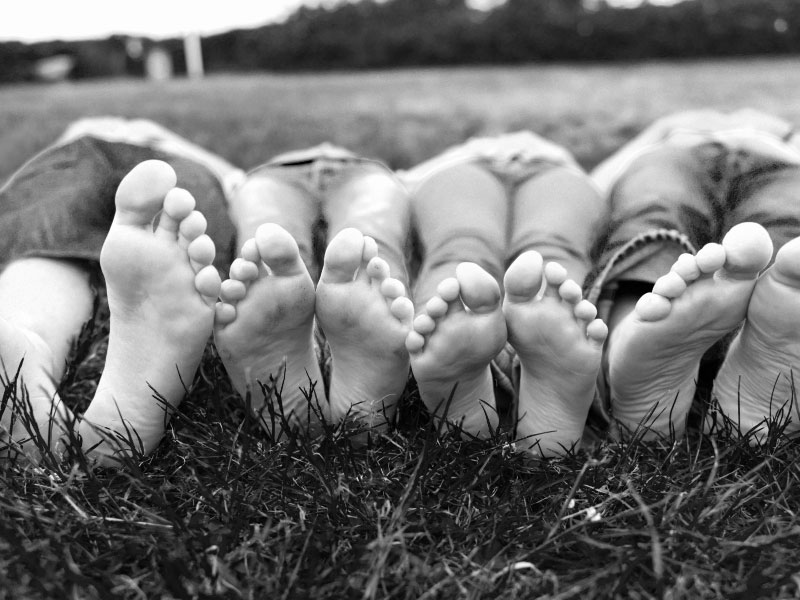
Knowing if your child is suffering from a foot disorder can be quite difficult, especially if your child is quite young. Young children do not always have the words or point of reference to express foot pain or request sore feet treatment. As parents, we need to look for telltale signs that alert us to the problem and let us know it might be time to visit a foot doctor and seek foot pain treatment.
8 Tell tale signs your child is suffering from a foot disorder or foot pain:
1. Any complaint of foot, heel or lower limb pain
Any pain reported by a child should be taken seriously. Sometimes pain in children’s lower limbs is incorrectly described as growing pains when the cause is actually something much more serious and could actually be a foot disorder. Foot pain and sore feet are an indication that something is wrong and treatment for sore feet and foot pain should be sought as soon as possible. It is important to see a foot doctor for any persisting pain to get an accurate diagnosis and to formulate a sore feet treatment plan. The cause could be biomechanical, related to poor posture or inappropriate sporting activities.
2. Delayed onset of walking
If your child has a delayed onset of walking it is possible the underlying reason is pain or discomfort – therefore they avoid walking. Usually, a child will begin walking between the ages of 10-16 months with most walking around 12/13 months. Walking is a vital stage in development, so if your child is not hitting this milestone, it is important to see a foot doctor and check for sore feet, heel pain and any other foot disorder or biomechanical problems.
3. Poor balance/ clumsiness/ co-ordination
If your child is falling over all the time or bumping into things, this is a definite red flag that something is wrong and not simply a matter of, “ My child is just clumsy!” A trip to both the doctor and a foot doctor is warranted to assess your child for any underlying problems. Biomechanical and gait analysis will be vital to improving the balance and coordination of your child. Foot pain and sore feet also need to be addressed and treated appropriately.
4. Flat feet
Many parents know about flat feet but don’t necessarily perceive it as a problem until their child starts to experience foot, heel or leg pain, often correlating with starting a new sporting activity. It is relatively easy to identify flat feet problems because you can see the shape of the foot collapsing or meeting the ground in a flat contour, rather than with a natural arch. If your child has flat feet, it is very likely they are causing pain and suffering. Most likely your child will have adapted their movements to compensate for the problem and may appear to behave normally. If you observe your child has flat feet, it is time to head to your foot doctor for a check up and foot pain treatment.
5. Gait disorders (in-toeing/ out-toeing/ tip-toeing)
Watching your child walking around on their tiptoes can actually look quite cute and it often takes time before you realise there is actually something preventing your child from walking normally. Any irregular gait needs proper investigation by a podiatrist to ensure your child’s gross motor skills develop appropriately.
6. Difficulty keeping up with peers
If you notice your child lagging behind other children when walking or running, it’s time to ask yourself why. You may tell yourself, “My child is just not athletic!” While this could possibly be true in sporting settings, it is unlikely to be true in everyday activities. For peace of mind, visit a foot doctor for a full analysis and to rule out any painful conditions like foot, heel and leg pain.
7. Alignment disorders (Metatarsus Adductus, Juvenile HAV)
Some disorders can be detected at birth such as Juvenile HAV. Passive manipulation for this type of disorder can work. A wait and see approach is sometimes adopted while other patients are treated with casts, straight last shoes and in severe cases surgery. Alignment disorders can cause pain, suffering and discomfort for children so a visit to the foot doctor is advised.
8. Trips frequently/ asks to be carried/ wants legs massaged
If your child frequently asks to be carried or wants their legs massaged you should be suspicious they are experiencing pain. In very young children you may find them reaching their hands up to be lifted or verbalising something like, “Up, Up!” It’s possible they may just want affection but it is also possible something is amiss.
A parent usually has good instincts when it comes to the welfare of their children, especially when they compare their milestones to other children. If you have a sneaking suspicion something is not quite right with your child, play it safe and seek out professional help from a foot doctor. Early diagnosis and foot pain treatment could save your child unnecessary suffering from painful foot disorders.
To arrange an appointment simply contact us at one of our foot clinics on the Sunshine Coast.
Contact . . .
